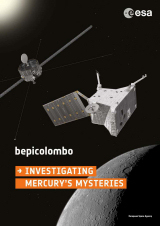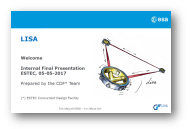ESA Science & Technology - Publication Archive
Publication archive
Publication archive
Context. Over the past 40 years, helioseismology has been enormously successful in the study of the solar interior. A shortcoming has been the lack of a convincing detection of the solar g modes, which are oscillations driven by gravity and are hidden in the deepest part of the solar body – its hydrogen-burning core. The detection of g modes is expected to dramatically improve our ability to model this core, the rotational characteristics of which have, until now, remained unknown.
Aims. We present the identification of very low frequency g modes in the asymptotic regime and two important parameters that have long been waited for: the core rotation rate, and the asymptotic equidistant period spacing of these g modes.
Methods. The GOLF instrument on board the SOHO space observatory has provided two decades of full-disk helioseismic data. The search for g modes in GOLF measurements has been extremely difficult because of solar and instrumental noise. In the present study, the p modes of the GOLF signal are analyzed differently: we search for possible collective frequency modulations that are produced by periodic changes in the deep solar structure. Such modulations provide access to only very low frequency g modes, thus allowing statistical methods to take advantage of their asymptotic properties.
Results. For oscillatory periods in the range between 9 and nearly 48 h, almost 100 g modes of spherical harmonic degree 1 and more than 100 g modes of degree 2 are predicted. They are not observed individually, but when combined, they unambiguously provide their asymptotic period equidistance and rotational splittings, in excellent agreement with the requirements of the asymptotic approximations.
[Remainder of abstract truncated due to character limitations]
 |
Contents
- Europe to Mercury
- Mercury rising: coping with high temperatures
- Building and testing BepiColombo
- Introducing the fleet
- Meeting Mercury
- From Messenger to BepiColombo
- An international endeavour
 |
The internal Phase 0 study of the Laser interferometer Space Antenna (LISA) mission has been performed at ESA's Concurrent Design Facility (CDF) and ran from 8 March to 5 May 2017. An internal final presentation has been prepared by the CDF Team, summarizing the outcome of the Phase 0 study. This presentation can be downloaded as a PDF (28 MB) by clicking the image to the right, or the 'link to publication' link below.
Contents of the presentation:
| p.1 | Introduction | p.195 | TT&C |
| p.6 | CDF Study objectives | p.207 | Data handling |
| p.10 | Science objectives | p.220 | Power |
| p.49 | Systems | p.238 | Mechanisms |
| p.78 | Payload | p.255 | Configuration |
| p.104 | Mission analysis | p.259 | Structures |
| p.124 | Ground segment and operations | p.270 | Thermal control |
| p.135 | DFACS - AOCS | p.282 | Risk |
| p.156 | Chemical propulsion | p.306 | Programmatics / AIV |
| p.172 | Electric propulsion | p.325 | Conclusions |
